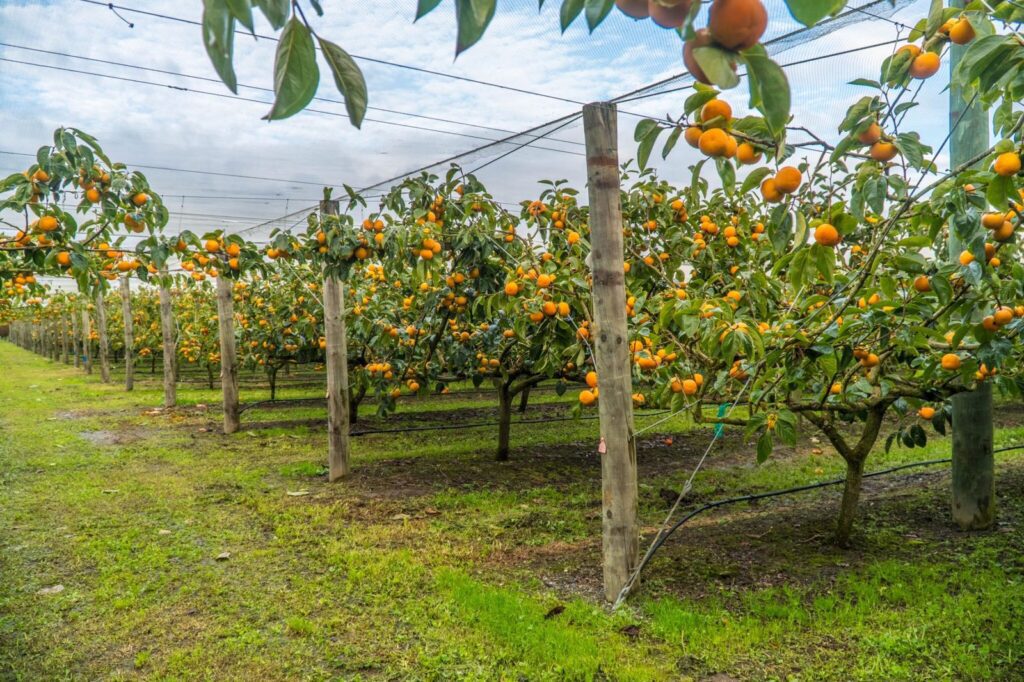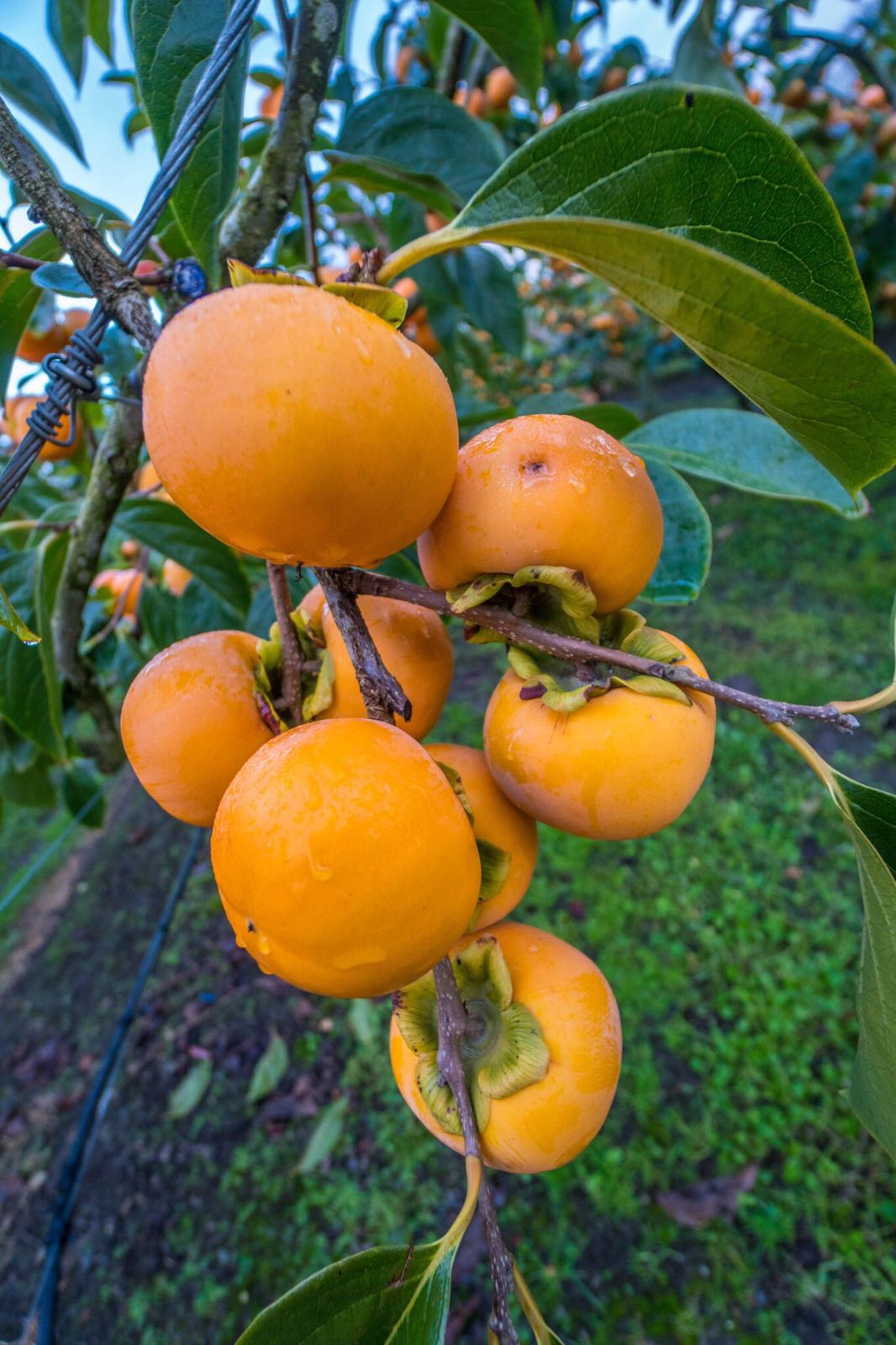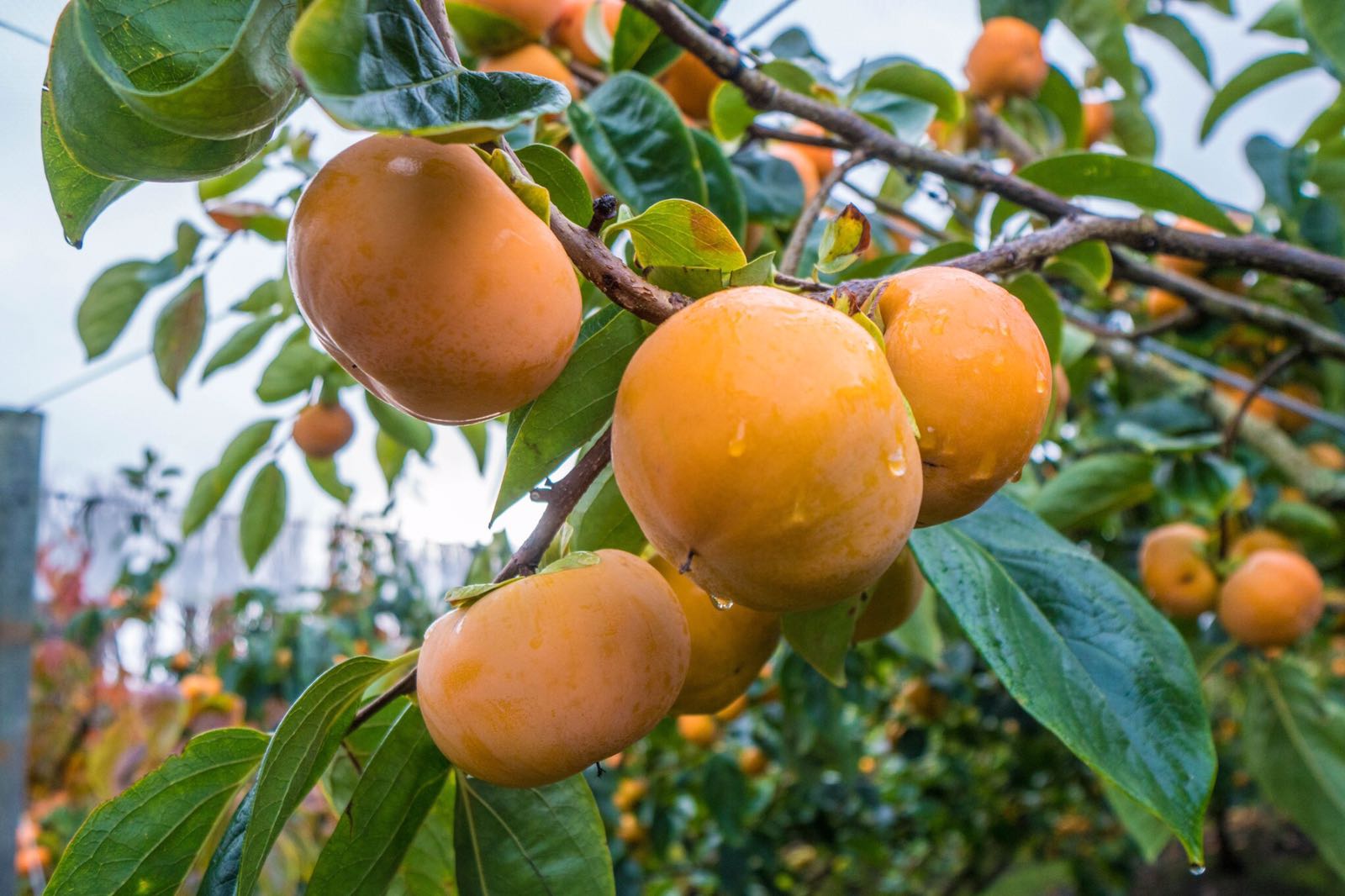Being part of A Lighter Touch is opening the door to biologicals as a future crop protection option for persimmon growers, their industry body says.
The Persimmon Industry Council represents 28 growers and eight packhouses. As an industry it generates about $10 million in export earnings a year, with primary markets being Australia, Thailand, Singapore and a number of other south-east Asian countries.
It is a growth sector, with Canada and China being developed as new markets for New Zealand growers, and sales at home also increasing as New Zealanders become more familiar with the fruit, which only started being commercially grown here in 1986.
Ian Turk, the product group’s manager, says being an export focused crop, as a sector their crop protection practices are heavily weighted towards traditional agrichemical pest controls because they want to ensure their crop is pest-free at the border.

Persimmons are a growth sector, both internationally and at home in New Zealand. Credit: Persimmon Industry Council.
However, the industry is starting to move towards crop protection tools with a lighter environmental touch, such as ethyl formate, used as a post-harvest for controlling pests on various crops. It is a naturally occurring compound with “generally recognised as safe” (GRAS) status.
“Being part of ALT has opened our thinking to biological controls. I’ve had discussions with growers about their use in conjunction with the post-harvest treatment fumigation we’re using more frequently, ethyl formate.
“If we could reduce our dependence on traditional chemical controls and rely on a post-harvest treatment with ethyl formate, then biological options become a real possibility for us. We’re a long way off implementing something like that but it’s these sort of discussions we’re having.”
Persimmons’ decision to sign up as a partner in A Lighter Touch stemmed from its involvement in a four-year Sustainable Food and Fibre Futures project that was a pre-cursor to ALT, focusing on sustainable agrichemical options for minor crops.
Involving five vegetable and seven fruit product groups, Persimmons saw the benefits from that project, both in terms of trial results and collaboration, and viewed ALT as a continuation of that work.
 “As a smaller product group, it was an opportunity to be part of something much bigger than we could afford on our own, to be part of all the sectors working together to find solutions to common issues.”
“As a smaller product group, it was an opportunity to be part of something much bigger than we could afford on our own, to be part of all the sectors working together to find solutions to common issues.”
Ian sees the collaboration ALT enables across the crop sectors as a key benefit of ALT. The diversity of sectors gives strength to the collective voice, bringing together smaller and larger sectors, and different crop types. That diversity also contributes to the breadth of knowledge and discussions within the programme.
Many ALT partners have pests and diseases in common, and for the persimmon sector, the results from all the minor use and other trial work conducted through ALT is a lasting legacy from the programme. Ian is currently collating the results from trials which have relevance to pests and diseases common to persimmons.
“It’s a resource library for our industry to inform future work. If we’re looking at mealybug control for example, we can go to this summary of all the work that’s been undertaken as part of A Lighter Touch, and see what has worked for other sectors. It’s an indicator for us in terms of what has potential for persimmons.”
The persimmons industry is aware the crop protection products it is currently using can be subject to regulatory review, so is conscious of the need to keep adding tools to their grower’s toolbox.
“We have committed export growers with good on-orchard management. Together with our post-harvest protocols with fruit, we’re getting good results in terms of low interception rates at the border. And as we look to grow into new markets like China, it’s important we continue to deliver pest-free fruit,” he says.
